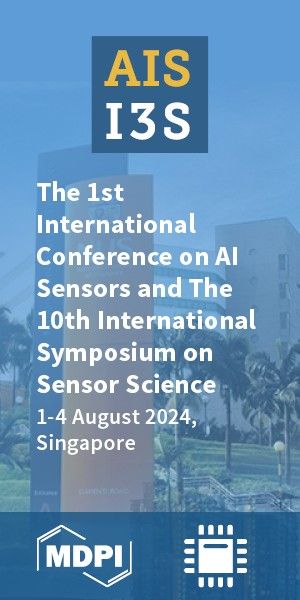Article
Version 1
Preserved in Portico This version is not peer-reviewed
Bell's Theorem Begs the Question
Version 1
: Received: 2 January 2023 / Approved: 3 January 2023 / Online: 3 January 2023 (08:52:26 CET)
Version 2 : Received: 4 January 2023 / Approved: 5 January 2023 / Online: 5 January 2023 (02:41:00 CET)
Version 3 : Received: 5 January 2023 / Approved: 6 January 2023 / Online: 6 January 2023 (02:16:05 CET)
Version 4 : Received: 16 January 2023 / Approved: 16 January 2023 / Online: 16 January 2023 (07:28:20 CET)
Version 5 : Received: 19 January 2023 / Approved: 20 January 2023 / Online: 20 January 2023 (02:03:44 CET)
Version 6 : Received: 23 January 2023 / Approved: 24 January 2023 / Online: 24 January 2023 (13:15:45 CET)
Version 7 : Received: 1 February 2023 / Approved: 1 February 2023 / Online: 1 February 2023 (07:17:00 CET)
Version 8 : Received: 7 February 2023 / Approved: 8 February 2023 / Online: 8 February 2023 (01:52:13 CET)
Version 9 : Received: 28 March 2023 / Approved: 28 March 2023 / Online: 28 March 2023 (05:39:30 CEST)
Version 10 : Received: 9 May 2023 / Approved: 9 May 2023 / Online: 9 May 2023 (10:30:49 CEST)
Version 11 : Received: 13 June 2023 / Approved: 13 June 2023 / Online: 13 June 2023 (07:21:21 CEST)
Version 12 : Received: 2 August 2023 / Approved: 3 August 2023 / Online: 3 August 2023 (07:22:51 CEST)
Version 13 : Received: 22 September 2023 / Approved: 22 September 2023 / Online: 25 September 2023 (04:03:31 CEST)
Version 14 : Received: 28 November 2023 / Approved: 28 November 2023 / Online: 28 November 2023 (10:12:21 CET)
Version 15 : Received: 26 December 2023 / Approved: 27 December 2023 / Online: 27 December 2023 (04:58:31 CET)
Version 16 : Received: 25 January 2024 / Approved: 25 January 2024 / Online: 26 January 2024 (01:57:51 CET)
Version 17 : Received: 10 February 2024 / Approved: 12 February 2024 / Online: 12 February 2024 (14:54:15 CET)
Version 2 : Received: 4 January 2023 / Approved: 5 January 2023 / Online: 5 January 2023 (02:41:00 CET)
Version 3 : Received: 5 January 2023 / Approved: 6 January 2023 / Online: 6 January 2023 (02:16:05 CET)
Version 4 : Received: 16 January 2023 / Approved: 16 January 2023 / Online: 16 January 2023 (07:28:20 CET)
Version 5 : Received: 19 January 2023 / Approved: 20 January 2023 / Online: 20 January 2023 (02:03:44 CET)
Version 6 : Received: 23 January 2023 / Approved: 24 January 2023 / Online: 24 January 2023 (13:15:45 CET)
Version 7 : Received: 1 February 2023 / Approved: 1 February 2023 / Online: 1 February 2023 (07:17:00 CET)
Version 8 : Received: 7 February 2023 / Approved: 8 February 2023 / Online: 8 February 2023 (01:52:13 CET)
Version 9 : Received: 28 March 2023 / Approved: 28 March 2023 / Online: 28 March 2023 (05:39:30 CEST)
Version 10 : Received: 9 May 2023 / Approved: 9 May 2023 / Online: 9 May 2023 (10:30:49 CEST)
Version 11 : Received: 13 June 2023 / Approved: 13 June 2023 / Online: 13 June 2023 (07:21:21 CEST)
Version 12 : Received: 2 August 2023 / Approved: 3 August 2023 / Online: 3 August 2023 (07:22:51 CEST)
Version 13 : Received: 22 September 2023 / Approved: 22 September 2023 / Online: 25 September 2023 (04:03:31 CEST)
Version 14 : Received: 28 November 2023 / Approved: 28 November 2023 / Online: 28 November 2023 (10:12:21 CET)
Version 15 : Received: 26 December 2023 / Approved: 27 December 2023 / Online: 27 December 2023 (04:58:31 CET)
Version 16 : Received: 25 January 2024 / Approved: 25 January 2024 / Online: 26 January 2024 (01:57:51 CET)
Version 17 : Received: 10 February 2024 / Approved: 12 February 2024 / Online: 12 February 2024 (14:54:15 CET)
How to cite: Christian, J. Bell's Theorem Begs the Question. Preprints 2023, 2023010023. https://doi.org/10.20944/preprints202301.0023.v1 Christian, J. Bell's Theorem Begs the Question. Preprints 2023, 2023010023. https://doi.org/10.20944/preprints202301.0023.v1
Abstract
I demonstrate that Bell's theorem is based on circular reasoning and thus a fundamentally flawed argument. It unjustifiably assumes the additivity of expectation values for dispersion-free states of contextual hidden variable theories for non-commuting observables involved in Bell-test experiments, which is tautologous to assuming the bounds of ±2 on the Bell-CHSH sum of expectation values. Its premises thus assume in a different guise the bounds of ±2 it sets out to prove. Consequently, what is ruled out by the Bell-test experiments is not local realism but the additivity of expectation values, which does not hold for non-commuting observables in any hidden variable theories to begin with.
Keywords
Bell’s theorem; local realism; Bell-CHSH inequalities; quantum correlations; Bell-test experimentsexperiments
Subject
Physical Sciences, Quantum Science and Technology
Copyright: This is an open access article distributed under the Creative Commons Attribution License which permits unrestricted use, distribution, and reproduction in any medium, provided the original work is properly cited.
Comments (0)
We encourage comments and feedback from a broad range of readers. See criteria for comments and our Diversity statement.
Leave a public commentSend a private comment to the author(s)
* All users must log in before leaving a comment








